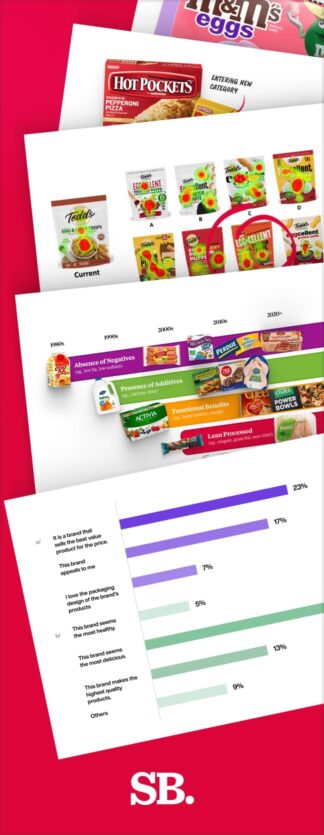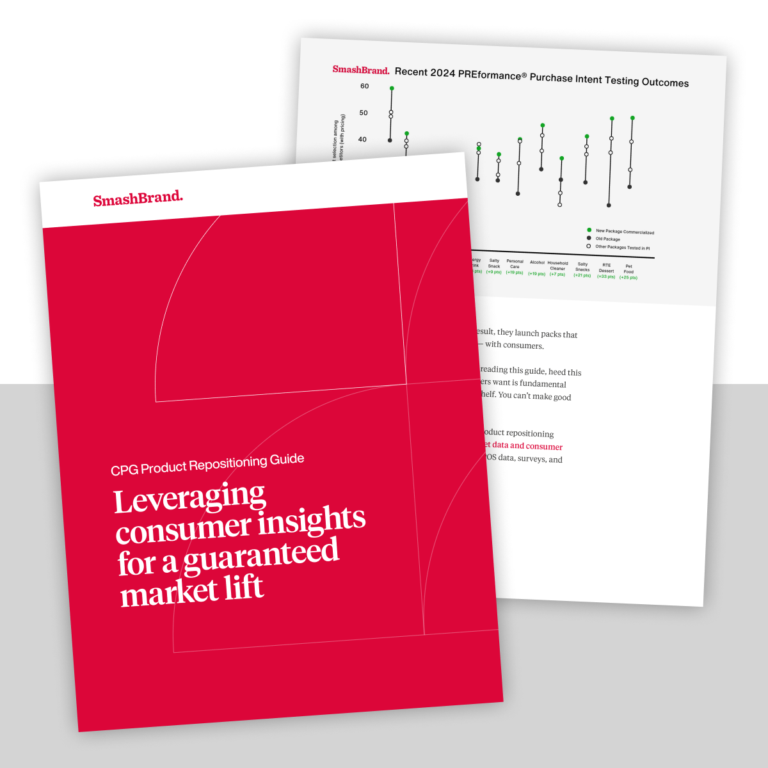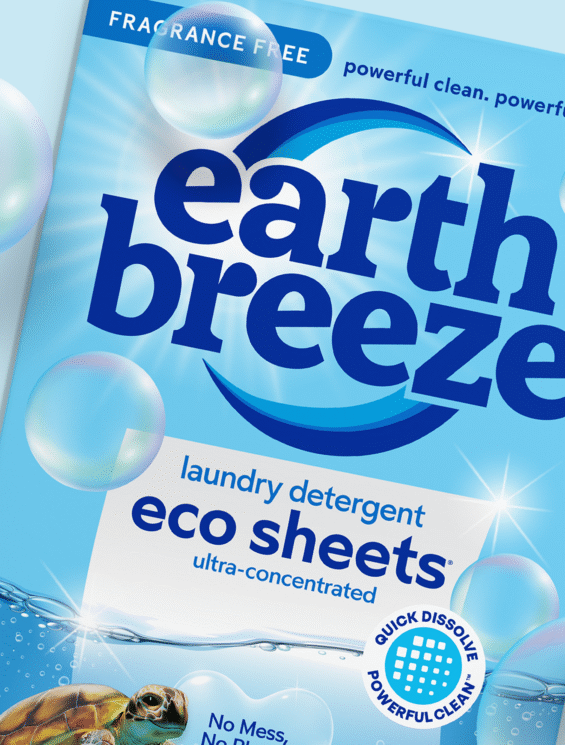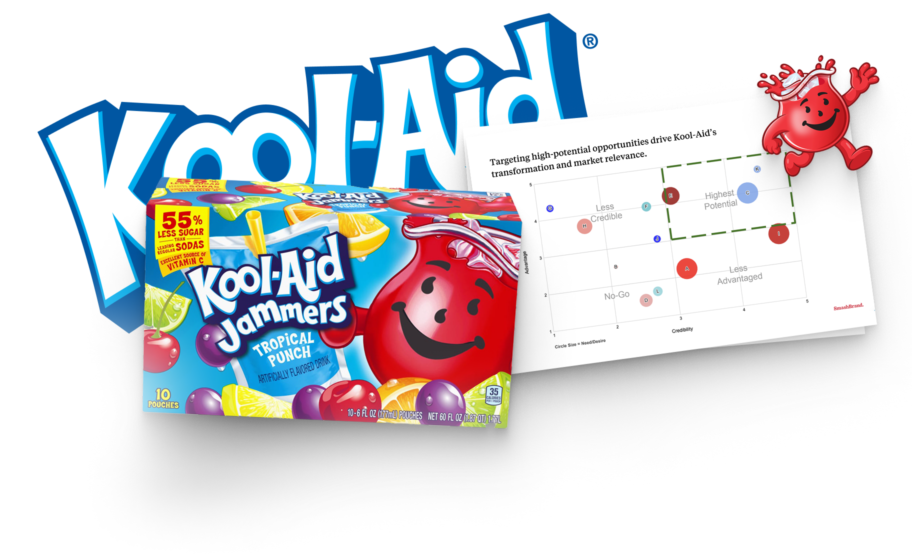There is a duality to rebranding products in that it is both exciting and frightening at the same time. It’s exciting in that it brings about the possibility of increased brand awareness for capturing more outstanding market share. Conversely, there is also the possibility that time and money invested in the rebranding process could lead to the opposite effect, with decreased brand awareness and giving up market share.
The good news is that you’ve found this article, which walks you through each step necessary to rebrand a product successfully. Adhering to the rebranding guidelines we’ve created will positively impact the new branding you showcase to the world.
Why products need rebranding.
Even if it is a collective decision, stating that it “feels like the right time” for a rebrand is not a strong enough reason for this initiative. You must understand the deeper meaning of engaging in a brand strategy that impacts everything from your product packaging to your social media accounts. By pushing forward, you will inevitably change your brand perception, and you better be confident that you are making the right decision.
Here are several valid reasons for rebranding a product.
DTC to retail.
While you may have a customer base for your current brand, shifting from DTC to retail makes you the “new brand” to many potential customers within your target audience. For many retail shoppers, you will have zero brand awareness or brand recognition, requiring your packaging design to do most of the work, convincing them to try your product.
Repositioning.
Do we have a strong enough position in the market is one of the rebranding questions every brand must ask, and there are many reasons for repositioning, but the two most common in the CPG industry are start-up brands that created regional or DTC success off a shoestring budget and brands that identify an opportunity to grow by changing their brand positioning to capture a new audience. Our approach follows the framework outlined in Rebranding vs. Repositioning helping brands determine when to evolve visuals, messaging, or market fit to match their next growth stage.
The key to rebranding to optimize product positioning is understanding what to retain from your old brand identity and carrying it forward as you create a new brand identity. A rebranding agency specializing in repositioning will help you accomplish this objective.
Changing landscape.
For some brands, aspects of their initial branding will remain the same throughout their existence, but no brand can stay the same forever. Whether it’s the competitive set, consumer trends, sales channels, or marketing platforms, an existing brand must adapt to retain and capture market share. Navigating these changes can be challenging as you must find a way to remain distinct yet align yourself with the consumer’s expectations.
Aligning with brand and line extensions.
The more products you produce, the more critical it is to be strategic with your brand architecture. Whether through brand stretching or narrow product extensions, each product created may require subtle revisions to the existing branding (especially with packaging designs) to adapt to the new product positioning.
The benefits of successful rebranding.
There are many potential benefits when creating new branding for a product, but you must choose the ones most important to your brand. Identifying these benefits will help you optimize your rebranding strategy to ensure you meet these outcomes.
| Benefit Category | Explanation |
| Enhanced Public Perception | Elevates your business in the eyes of the target audience, signaling growth and relevance. |
| New Customer Base | Opens avenues to target new demographics and broader audiences. |
| Competitive Edge | Helps your business stand out in a crowded market, especially if the old brand is outdated. |
| Realign Business Objectives | Updates the brand to reflect the company’s current mission, vision, and values. |
| Increased Profitability | A better brand image can lead to higher sales and profits. |
| Simplification | Streamlines complex or disjointed old brand elements to make the message clearer. |
| Adapt to Market Changes | Allows your brand to keep up with market trends, new technology, or shifts in consumer behavior. |
| Merge or Acquisition Synergy | Helps unify merged or acquired companies’ corporate cultures and product offerings. |
| Employee Morale and Retention | Boost employee engagement and a sense of pride in the company. |
| Legal Benefits | Helps avoid legal issues like trademark disputes, offering a fresh start. |
| Eliminate Negative Image | Helps shed or mitigate previous negative public perceptions. |
| Future-Proofing | Sets your company up for future growth and makes it easier to enter new markets. |
| Consistency | Cleans up brand elements to create a cohesive, consistent brand image. |
| Attract Talent | Makes the company more appealing to high-quality professionals. |
| Boosts Digital Marketing | Revitalizes your digital presence, improving SEO, user experience, and online visibility. |
The risks of product rebranding.
We cannot turn a blind eye to the risks associated with our rebranding effort. There is always a chance that our change in branding will negatively impact our engagement with the target audience.
| Risk Category | Explanation |
| Consumer Resistance | Existing customers may not respond well to the new brand identity, leading to a potential decrease in loyalty or sales. |
| High Costs | Rebranding can be expensive, covering everything from new marketing materials to website updates. Not budgeting adequately can strain resources. |
| Loss of Brand Equity | If not executed properly, rebranding can lead to a loss of the brand equity built over the years. |
| Confusion in the Market | Multiple brand changes in a short period can confuse customers and may lead to a loss in trust. |
| Internal Resistance | Multiple brand changes in a short period can confuse customers and may lead to a loss of trust. |
| Ineffective Communication | Poor communication of the reason and advantages of the rebrand can lead to negative public and internal perceptions. |
| SEO Rankings Drop | Changing domain names, website structure, or page content can temporarily affect product page SEO rankings. |
| Legal Risks | Failing to research new brand elements like logos could result in legal issues such as copyright or trademark infringement. |
| Dilution of Brand Message | Trying to appeal to a broader audience might dilute the brand’s core message, alienating existing customers. |
| Implementation Challenges | Incorrect or incomplete rollout of the new brand elements can lead to various operational issues. |
| Negative Public Relations | Public backlash can occur, particularly if the rebrand is seen as unnecessary or a move away from a well-loved identity. |
| Wasted Marketing Collateral | Old marketing materials become obsolete after a rebrand, leading to additional costs. |
| Missed Deadlines | Rebranding often has a set timeline; missing deadlines can lead to a disorganized launch. |
| Mismatch with Corporate Values | The new brand identity might not align with the corporate values, causing dissonance. |
| Customer Re-education Costs | Customers accustomed to the old brand may require significant marketing efforts to understand the new brand. |
Types of product rebranding.
It’s important to distinguish the various types of rebranding as they each require a unique cost, resource investment, and differing completion timelines.
Cosmetic rebrand.
Cosmetic rebranding is the simplest (yet still deserving of deep research and testing) form of rebranding, where you make minor changes to visual aspects, including font choices and color schemes. A cosmetic rebrand applies to every part of branding, from the logo to the packaging design. What doesn’t change is the core identity, positioning, or core offerings.
Partial rebrand.
Partial rebranding is more than a brand refresh; it involves updating visual elements, purchase driver distinction, and means of brand storytelling. What doesn’t change is the brand positioning, the company mission, and core values.
Complete rebrand.
Including what we’ve discussed in cosmetic and partial rebranding, a full rebrand transforms all business touchpoints. In some cases, this includes changing major business components, such as a company name, but more often, it includes recreating the visual identity, brand philosophy, and business strategy. An entire rebrand requires the company to rethink its position in the marketplace, how it speaks to consumers, and what visual representation best suits the business.
Creating a product rebranding strategy.
An effective strategy enables a company to get the most out of its product rebranding campaign. While the inner workings of every strategy will be unique, there are fundamental rebranding steps every brand must take. Here’s a look at each step necessary for a product rebrand.
Market research.
While many brands perform market research to validate the effectiveness and desirability of their product design, fewer commit to researching the best ways to brand their product. Unfortunately, only a small percentage of companies make this investment in their rebranding campaign.
You cannot rebrand effectively without understanding your market. Brands of all sizes must research to find gaps and opportunities. While you can conduct research on a shoestring budget, working with agencies specializing in consumer research can help you identify the best way to put yourself forward.
Budgeting.
Having a well-thought-out budget is one of the most critical steps on a rebranding checklist, and it doesn’t get enough attention. Not allocating enough capital and team member time to the initiative is often why new branding doesn’t see the light of day or fails to capture attention when entering the market.
Messaging concepts.
The language consumers encounter, whether auditory or written, plays a vital role in successful rebranding. From the package design to the marketing strategy, the messages you convey and how you articulate them through your brand voice make a significant difference in memorability and the level of brand value consumers hold for your company and its products.
Design concepts.
While visual rebranding is often the first aspect that comes to mind during rebranding, it enhances your various communication channels. Visual rebranding applies to every aspect of the look, from creating a new logo on the product to overhauling how it appears on the website as detailed in the ultimate guide to website rebranding.
Rebrand validation.
Brands shouldn’t leave validation to how the media, existing customers, and the target market feel about the new brand presentation. Confirming the impact comes through continuous and rigorous rebrand testing. At SmashBrand, we perform package design tests to ensure maximum recall for the brand name and purchase intent for new customers.
Shockingly, even many big names inadequately perform brand testing, which is why we see national brands on the list of rebrand failures. Proper rebrand testing occurs throughout the entire development process, providing insights that help you create new iterations.
Steps for a successful rebranding launch.
Every rebrand comes with hype that brands can leverage for enhanced velocity and increased reach. But to take advantage of this natural element of rebranding, your launch campaign must take the necessary steps to ensure consistency and visibility.
Documentation .
Once the product rebrand is complete, the first step that a company must take is creating and providing the team with a rebrand presentation deck and brand guidelines that include a style guide. Putting a brand guideline in place immediately ensures the team makes the necessary changes to social media profiles, marketing material, and anywhere else they present the product.
Internal communication.
Whether to address reservations or prevent accidents, a brand must go to great lengths to communicate the product rebranding. The creative director and brand manager can use this to inform and excite the team about the changes. While this may seem unnecessary, it will significantly affect everything from social media activity to meetings with channel partners.
Go-to-market strategy.
Strong brands recognize the significance of a well-executed go-to-market strategy, seizing the opportunity to showcase their most innovative ideas. Whether through in-store displays or social media campaigns, presenting the new packaging design resulting from the rebrand in a unique manner is key to capturing sustained attention.

Nice Package
Don’t miss out on our monthly newsletter Nice Package!
Each month, we deliver a data-driven newsletter directly to your inbox, unpacking a critical topic in the FMCG & CPG industry.
"*" indicates required fields
Measuring performance.
Assessing the effectiveness of your rebranding effort is essential for understanding its impact and making data-driven adjustments. Monitor CPG KPIs such as brand awareness, customer engagement, and market share after the rebrand launch. You can also measure performance by looking into website analytics, social media metrics, and sales data to gauge initial reactions and long-term trends.
Data-driven brand development that can guarantee sales performance.
If you need a rebrand with performance predictability, we can help. SmashBrand is a brand development agency that researches, designs, and tests all products to ensure peak shelf performance. Book a time to discuss your project with our team.
Subscribe to
Nice Package.
A monthly newsletter that unpacks a critical topic in the FMCG & CPG industry.
Free Resource.

CPG product repositioning guide.
Explore the five undeniable signs your CPG product needs repositioning along with strategies for leveraging consumer insights for a guaranteed market lift.
Learn More About CPG product repositioning guide.


